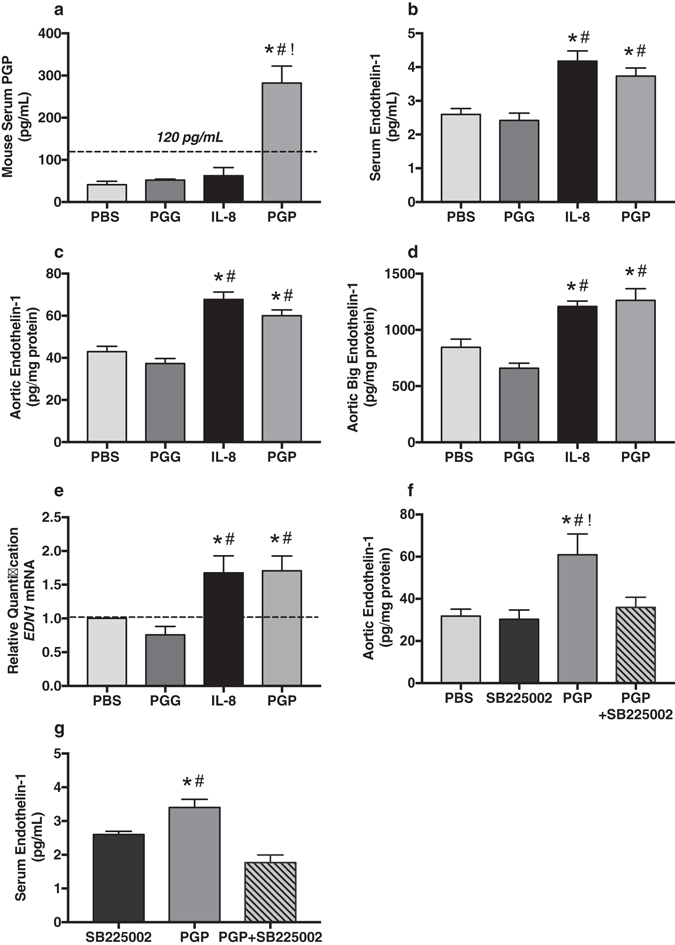Figure 2.

Acetylated PGP increases vascular ET-1 production via CXCR2 in vivo. (a) As proof of concept, serum concentrations for PGP were measured from c57bl/6 mice systemically treated with PBS, PGG, IL-8 or PGP. Importantly, intraperitoneal administration of PGP increased circulating serum PGP to concentrations comparable to patient samples (*#! P < 0.0001, F = 23.2, n = 4 animals per experimental group). (b) Intraperitoneal administration of IL-8 or PGP to c57bl/6 mice significantly increased serum ET1 when compared to PBS and PGG treated mice (*# P < 0.0001 compared to PBS and PGG, F = 13.07, n = 8 animals per group). (c) Direct measurement of ET1 in aortic tissue lysates revealed similar results with significant increases in tissue specific ET1 (*# P < 0.0001, F = 24.7, n = 8 animals per group) and (d) big ET1 production (*# P < 0.0001, F = 18.5, n = 8 animals per group). (e) Intraperitoneal administration of both IL-8 and PGP significantly increased aortic transcription of Endothelin 1 gene (EDN1) mRNA in vivo (*# P = 0.03 compared to PBS and PGG, F = 5.2, n = 5 animals per group). Co-administration of PGP and SB225002 (1 mg/kg) blocked the effects of PGP alone on (f) aortic ET1 production (*#! P = 0.01 compared to PBS, SB225002, and PGP + SB225002, F = 5.7, n = 8 animals per group) and (g) serum ET1 concentrations (*P = 0.02 compared to SB225002 and # P < 0.001 compared to PGP + SB225002, F = 5.7, n = 5 animals per group). These results demonstrate the importance of CXCR2 activation in ET1 production in vivo.
